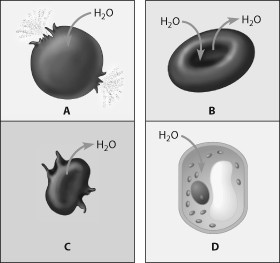Nitrogen-fixing bacteria in the roots of soybeans help provide a source of nitrogen to the plants, and in exchange, the bacteria obtain food from the plants. Which reaction can these bacteria catalyze?
A. nitrogen gas (N2) to nitrate (NO3)
B. ammonium (NH4+) to nitrate (NO3)
C. nitrogen gas (N2) to ammonium (NH4+)
D. nitrate (NO3) to ammonium (NH4+)
E. nitrate (NO3) to nitrogen gas (N2)
Answer: C. nitrogen gas (N2) to ammonium (NH4+)
You might also like to view...
In examining water samples preserved in glass jars over the last century, you notice a steadily declining pH. What is the most likely general explanation?
A. gradual eutrophication of water sources B. rising atmospheric carbon dioxide levels leading to gradual acidification C. dumping of acids in waterways D. mislabeling of samples E. None of the answer choices is correct.
How does mineral mobility affect the symptoms of deficiency in plants?
a. Deficiency of a mobile nutrient usually affects older organs more than young ones b. Deficiency of a mobile nutrient usually affects younger organs more than older ones
Into which group would you place a photosynthetic organism that lacks a nucleus and has a thin peptidoglycan wall surrounded by an outer membrane?
a. Fungi b. Plantae c. Firmicutes (gram-positive bacteria) d. Proteobacteria (gram-negative bacteria) e. Animalia
Which figure depicts an animal cell placed in a solution hypotonic to the cell?

A) cell A
B) cell B
C) cell C
D) cell D